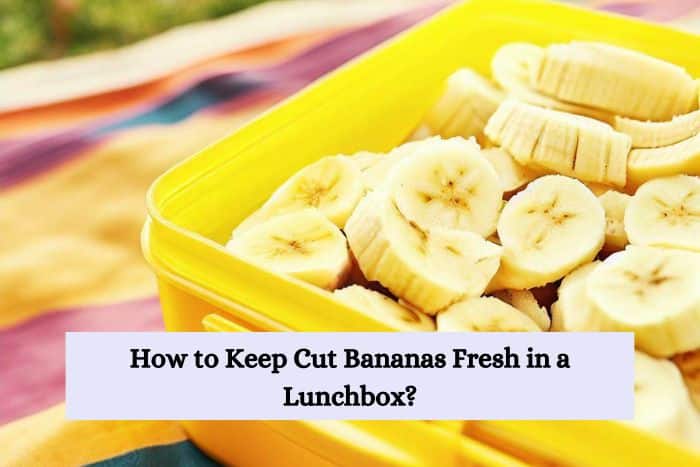If you enjoy taking your favorite fruit to work or school, you may be wondering how to keep cut bananas fresh in a lunchbox.
Before we find out the answer, why cut them up anyway?
Aside from the fact that they are an awkward shape and take up too much room in the box!
There are several reasons why we prefer bananas to be sliced.
Keep reading to the end of this article for a link that reveals all.
Ok, back to the main question, let’s have a look at what can be done to ensure your lunch snack stays fresh.
Once a banana has been cut or sliced, it reacts with oxygen, and this is why it turns brown. To keep a sliced banana fresh, it needs to be coated in citric acid, and this can be found in several different types of fruit. The acid slows down the oxidation process. Dipping the slices of banana in lemon juice is the most effective option, but orange juice will also stop the banana from turning brown. This action may affect the taste of the banana, and if this is a problem, then soda water may be used instead. Once dipped in the citric acid, store it in an air-tight container.
1. Why Do Cut Bananas Turn Brown?
If you prefer your bananas sliced, rather than whole, in your lunchbox, it can be somewhat annoying to discover that they have turned brown.
So why does this happen?
The process is known as oxidation and also affects other fruit such as apples, apricots, and oranges.
Bananas contain an enzyme known as polyphenol oxidase, which reacts when exposed to oxygen.
When you slice the banana, you are actually cutting through its cells, allowing them to meet oxygen in the surrounding air.
You can think of it as a similar process to that of rust forming on metal.
And talking of metal, surprisingly, the quality of your knife can affect how quickly your banana turns brown!
A low-quality knife may have some corrosion which will contain elements that increase oxidation.
Oxidation is also responsible for a banana turning brown if it is bruised rather than cut.
Bruising damages the cellular structure, exposing it to oxygen.
The process of oxidation can be halted by cooking, as the heat inactivates the enzyme.
However, do note that the banana is still safe to eat even once oxidized; it is just down to your personal preference as to whether you don’t like the look of it.

2. How Long Do Peeled Bananas Last?
So, having established that cutting your banana can cause it to go brown, what about if you just peel it instead?
How long would a peeled banana last, and does it make a difference if you put it in the fridge?
As you can imagine, the skin of the banana hides the fruit away from oxygen, which is why it retains its creamy white color.
As soon as you peel the banana, you have exposed it to oxygen.
The same principle applies to a whole, peeled banana; you need to stop the oxidation by the use of citric acid from other fruits.
By dipping the entire banana in lemon or orange juice or something similar, it should last up to 48 hours at room temperature.
As the juice may affect the taste, you can use a brush or a spray bottle to coat the banana rather than submerge it, as this will cause it to absorb more flavor.
Placing the peeled banana in a fridge will prolong its life further, up to four days.
The colder temperature slows down the oxidation and ripening process.
Another option is to wrap the entire banana in aluminum foil or plastic wrap, but ensure there are no gaps.
How to Keep a Banana from Turning Brown?
Final Thoughts
I am sure you will be happy to have found out that it’s possible to stop cut bananas from going brown in your lunchbox.
The process of oxidation turns the bananas brown, but they are still safe to eat.
And if you prefer to simply peel your bananas rather than cut them, you can still store them for several days.
Enjoy your lunch!
And, as I promised, here’s why slicing your bananas makes them taste better!
